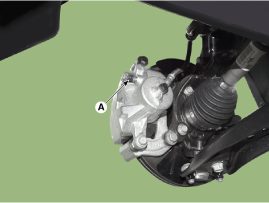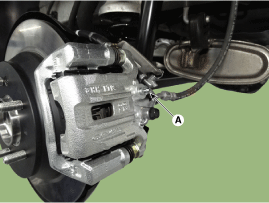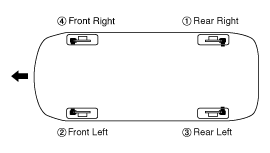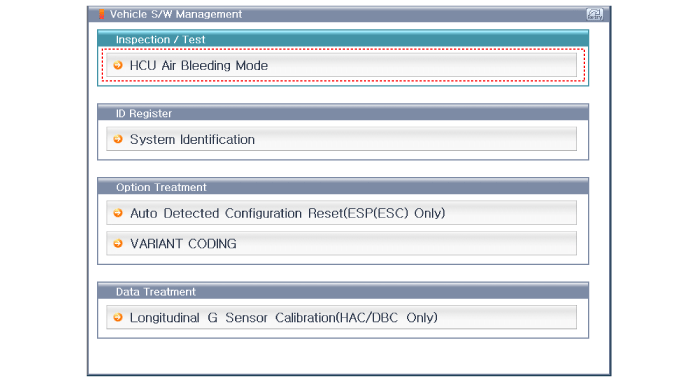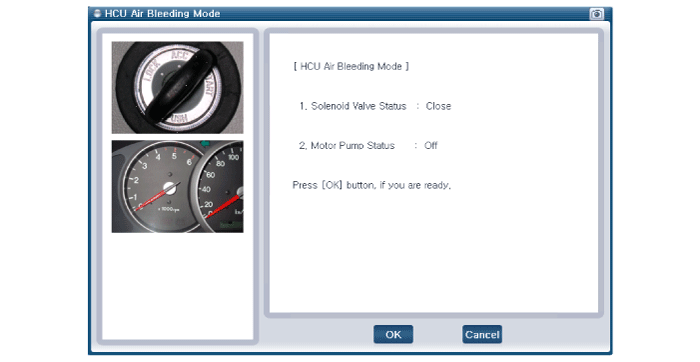Hyundai Kona: Brake System / Brake bleeding prcoedures
Hyundai Kona (OS) 2018-2025 Service Manual / Brake System / Brake bleeding prcoedures
| Brake Bleeding Prcoedures |
Brake System Bleeding
|
| 1. |
Make sure the brake fluid in the reservoir is at the MAX (upper) level
line.
|
| 2. |
Have someone slowly pump the brake pedal several times, and then apply
pressure.
|
| 3. |
Loosen the right-rear brake bleed screw (A) to allow air to escape from
the system. Then tighten the bleed screw securely.
[Front]
[Rear]
|
| 4. |
Repeat the procedure for wheel in the sequence shown below until air
bubbles no longer appear in the fluid.
|
| 5. |
Refill the master cylinder reservoir to MAX (upper) level line.
|
ABS System Bleeding
This procedure should be followed to ensure adequate bleeding of air and filling
of the ESC unit, brake lines and master cylinder with brake fluid.
| 1. |
Remove the reservoir cap and fill the brake reservoir tank with brake
fluid.
|
| 2. |
Connect self-diagnosis connector (16pins) located under the driver side
crash pad to self-diagnosis device, and then turn the self-diagnosis
device after key is ON.
|
| 3. |
Select the "vehicle model" and "ABS/ESC" on GDS vehicle selection screen,
then select OK.
|
| 4. |
Select HCU air bleeding mode.
|
| 5. |
Have an assistant press the brake pedal several times to pressurize
it and keep it pressed.
|
| 6. |
Pump the brake pedal several times, and then loosen the bleeder screw
until fluid starts to run out without bubbles. Then close the bleeder
screw (A).
[Front]
[Rear]
|
| 7. |
Repeat the procedure for wheel in the sequence shown below until air
bubbles no longer appear in the fluid.
|
| 8. |
The steps should be performed in the order of rear right, front left,
rear left and front right.
|
| 9. |
Refill the master cylinder reservoir to MAX (upper) level line.
|
 Troubleshooting
Troubleshooting
Troubleshooting
Problem Symptoms Table
Use the table below to help you find the cause of the problem. The numbers indicate
the priority of the like cause of the problem ...
 Brake System
Brake System
...
Other information:
Hyundai Kona (OS) 2018-2025 Service Manual: ETC (Electronic Throttle Control) System Specifications
Specification
[Throttle Position Sensor (TPS)]
Throttle angle (°)
Output Voltage (V)
TPS1
TPS2
0
0.50
4.50
10
0.96
4.05
20
...
Hyundai Kona (OS) 2018-2025 Service Manual: Specification
Specifications
Item
Specification
Rated voltage
DC 12V
Operating voltage
DC 9.0 ~ 16.0V
Operating temperature
-86 to 167°F (-30 to 75°C ...
© 2018-2025 www.hkona.com


